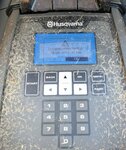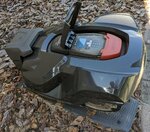WattOhms
Newbie level 3
This community is great. I searched through several of the answers and am impressed with how much you guys help.
Here is what I have -
I had a 28v 4200mA DC charger go bad (flooded during a little hurricane called Irma). The company would like around $350 for a replacement.
I own a sdn 5-24-100p which is 28v 5000mA with variable voltage between 23.5-29v. I wired this up and the charging device says 'current too high'. I realize it is 800mA over but was hoping to get lucky. I tried turning the voltage down, attempting to lower current but the end device still did not like this and prompts with same message.
Can I achieve a 28v 4200mA output with a simple resistor? Parallel or series? I think parallel and rated around 25w.
Any help is greatly appreciated.
Here is what I have -
I had a 28v 4200mA DC charger go bad (flooded during a little hurricane called Irma). The company would like around $350 for a replacement.
I own a sdn 5-24-100p which is 28v 5000mA with variable voltage between 23.5-29v. I wired this up and the charging device says 'current too high'. I realize it is 800mA over but was hoping to get lucky. I tried turning the voltage down, attempting to lower current but the end device still did not like this and prompts with same message.
Can I achieve a 28v 4200mA output with a simple resistor? Parallel or series? I think parallel and rated around 25w.
Any help is greatly appreciated.

